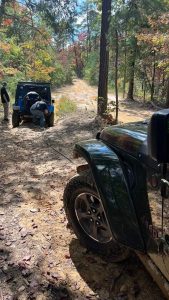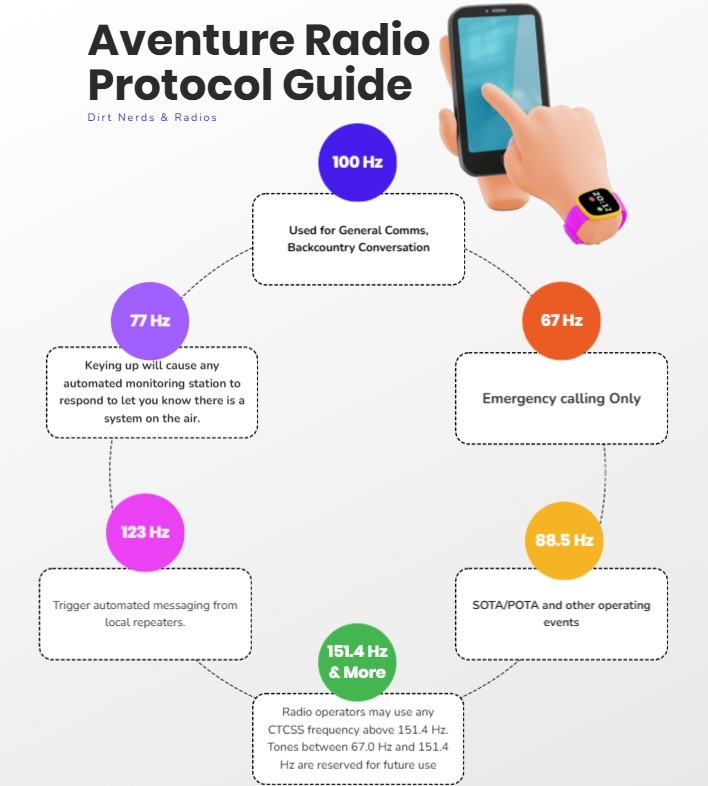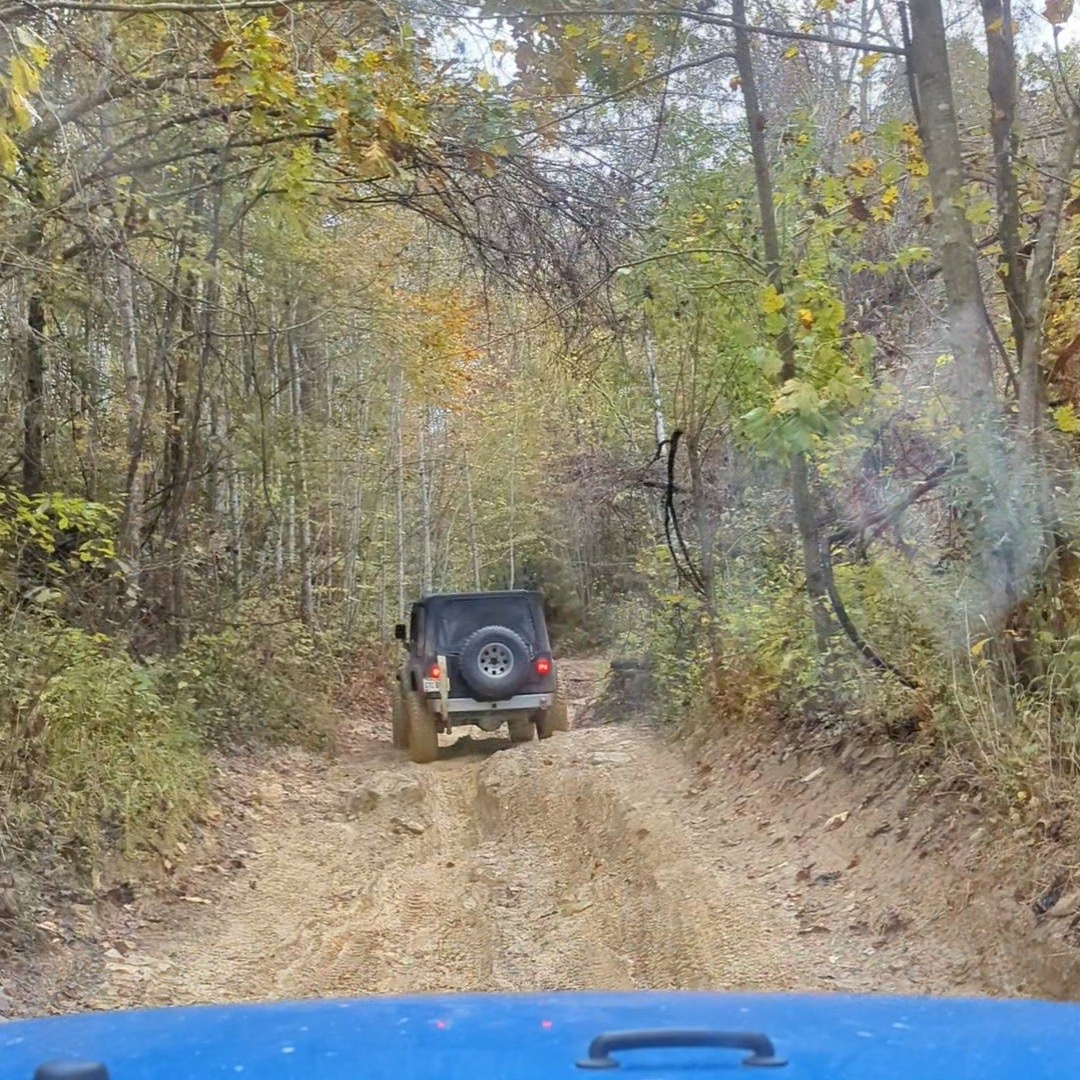While out on the trail, it’s vitally important to maintain some form of communication. Yes, this means you need to be able to communicate locally with your group; but many overlook or neglect the ability to communicate over longer distances in case of emergency. Recently, many have turned from CB to GMRS as a means of communicating on the trail. GMRS does a great job for trail comms, but GMRS can’t cover long distance. On most adventures and trail rides, cell phone service is limited too. This is where amateur radio shines. Amateur radio can provide communication anywhere from local to global. And for those who take safety seriously, communication should be near the top of your list. Backcountry emergency services can take hours if not more to reach you, but that’s only if they know you need help.
Why Radio for Offroad?
It’s important to remember that when on the trail, there likely will be zero cell coverage. In some off-road areas, the closest tower is simply too far away. Both radio options are independent of infrastructure like cell towers and phone lines, meaning they continue to provide reliable communication regardless of location. But just because they are independent of infrastructure, doesn’t mean they can’t take advantage of it. Many areas or regions have amateur radio & GMRS repeaters set up on high points to provide extended communication range. These repeaters help to boost your communications from deep in a remote trail, to all over the local region (or farther!).
Before we go too deep, we’d love to recognize GMRS as another option available. GMRS radios transmit and receive in the UHF band just above the Amateur radio UHF band allocation, commonly referred to as the 70CM band. This means that both options work great for communicating within your trail group. We love and use both options for local trail communications. One key difference here is that GMRS only provides UHF band access. An amateur radio license provides access to many other frequencies. The additional frequencies offered by Amateur radio are what provides the ability to communicate over longer distances, particularly without needing to use a repeater to boost their signal.
Licensing Requirements
To legally use amateur radio for offroad, you need a license. The FCC has three classes or levels: Technician, General, and Amateur Extra. Starting off, the Technician class license is your entry level into the world of ham radio. If all you are doing is trail communications, you can stop here and be perfectly happy! You will get access to everything you need & more here. There’s a 35-question multiple choice exam you’ll need to pass with a 74% or better. The study materials are available online for free, in abundance. We have our own materials available here. Paid materials & classes are also available if you prefer to follow along with a course during your studies.
Using Radios in Real Situations
Imagine you and a few friends are deep into a trail in a remote area. You are miles from the nearest road, and you lost cell service hours ago. Suddenly, one of the vehicles gets stuck, and you’re separated from the rest of the group by several hills. With no cell signal, your only way to communicate quickly and coordinate help is through your radio. You tune in to your agreed-upon frequency and immediately connect with the other drivers—keeping everyone on the same page and ensuring help is on the way.

Coordinating Group Movements:
- When traveling with multiple vehicles, it’s easy for the group to get separated, especially in rough terrain. Use radios to stay in constant communication with other drivers, so no one gets left behind or lost.
Calling for Help:
- In case of mechanical issues, flat tires, or other emergencies, radios allow you to reach out to nearby off-roaders or use repeaters to contact help when cell phones don’t work.
Emergency Situations:
- Radios can be a lifeline in dangerous situations. For example, if someone in the group is injured and you need to call for medical assistance, amateur radio frequencies can often be used to reach emergency services, especially via repeaters.
- In remote, off-road situations, communication is key to ensuring everyone stays safe and on track. By using amateur radios, you gain peace of mind, knowing that even in areas where mobile phones fail, you have a reliable way to connect with your group and reach out for help if needed.
Best Frequencies and Etiquette
In short, when on trail, you should use 146.580 MHz FM with CTCSS tone 100.0Hz.
When it comes to the best frequencies for on trail activities, we recommend using the North America Adventure Frequency, also known as the Adventure Radio Protocol. Read more about Adventure Radio protocol at Sierra Radio Systems.
Adventure Radio Protocol takes advantage of CTCSS Tones to allow a single frequency to be used for multiple purposes. These sub-audible tones are used to signal the type of traffic on the adventure radio frequency. The Adventure Radio Protocol reserves all CTCSS tones between 67.0 Hz and 151.4 Hz to be assigned over time for various purposes but allows radio operators to use any CTCSS frequency above 151.4 Hz for any other purpose.
Adventure Radio Protocol Tone Guide
These are the CTCSS tones currently in use by the Adventure Radio Protocol:
- 67.0 Hz Emergency calling.
- 77.0 Hz (Ping) – Keying up will cause any automated monitoring station to respond to let you know there is a system on the air.
- 88.5 Hz SOTA/POTA and other operating events.
- 100.0 HZ General backcountry conversations.
- 123.0 Hz Trigger automated messaging from local repeaters.

Closing Thoughts
Thanks for taking the time & stopping by. I hope you found this information helpful & informative. Before you head out, I’d like to leave you with a few last tips:
- Test your radio before the trip: Ensure your equipment is working and programmed with the correct frequencies.
- Coordinate frequencies with your group: Choose a primary and backup frequency for your group to use during the trip.
- Know the nearest repeaters: Research and program local repeaters into your radio in case of emergencies.
- Pack spare batteries: Don’t rely on just one power source; bring backups to ensure you’re covered.
- Follow radio etiquette: Practice clear and concise communication to avoid confusion, especially in critical situations.
Off-roading and camping are exciting ways to explore the great outdoors and enjoy nature. However, being in remote areas can make it hard to stay in touch with others. That’s why it’s important to have a Communications Plan in place for trips. The Dirt Nerds & Radios community follows a comms plan provided by our Radio club on every trip. Read more about our DNR RC Comms Plan.
Radios play a key role in offroad & overland communications. If you need help finding a solution that works for you, feel free to stop by our discord. We’d love to help.

